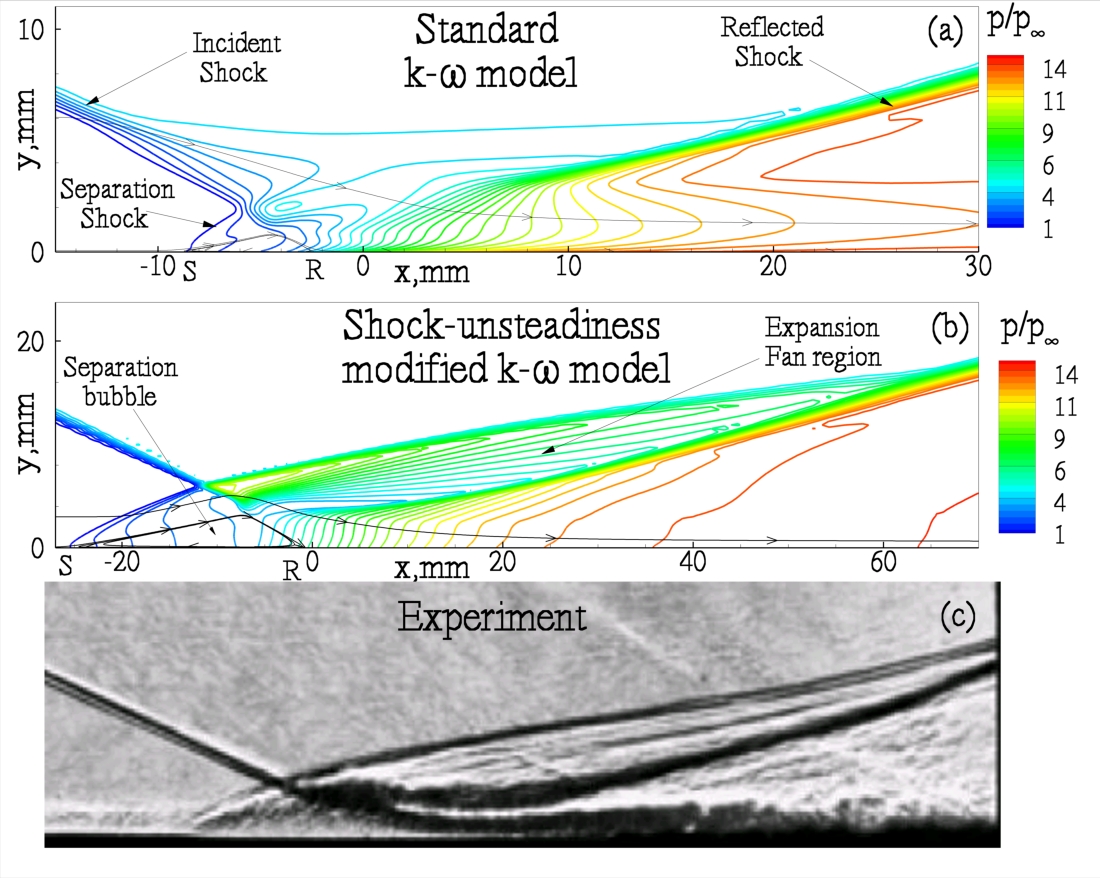Shock-unsteadiness model applied to oblique shock wave/turbulent boundary-layer interaction
Reynolds-averaged Navier-Stokes prediction of shock wave/turbulent boundary layer interactions can yield
significant error in terms of the size of the separation bubble. In many applications, this can alter the shock structure and the
resulting surface properties. Shock-unsteadiness modification of Sinha et al. (Physics of Fluids, Vol.15, No.8, 2003) has shown
potential in improving separation bubble prediction in compression corner flows. In this article, the modification is applied to
oblique shock wave interacting with a turbulent boundary layer. The challenges involved in the implementation of the
shock-unsteadiness correction in the presence of multiple shock waves and expansion fans are addressed in detail. The results
show that a robust implementation of the model yields appreciable improvement over standard k-omega turbulence model predictions.
modelling
Ref: Ref: Pasha, Amjad A., and Sinha, K., "Shock-unsteadiness model applied to oblique shock wave/turbulent
boundary-layer interaction". International Journal of Computational Fluid Dynamics ,Vol. 22, No. 8, September 2008,
569-582
Representative results:

Improved prediction of shock structure by using shock-unsteadiness correction to the standard k-omega turbulence model

